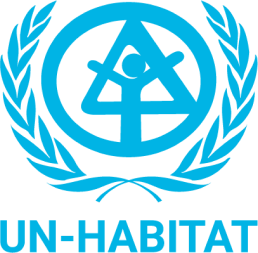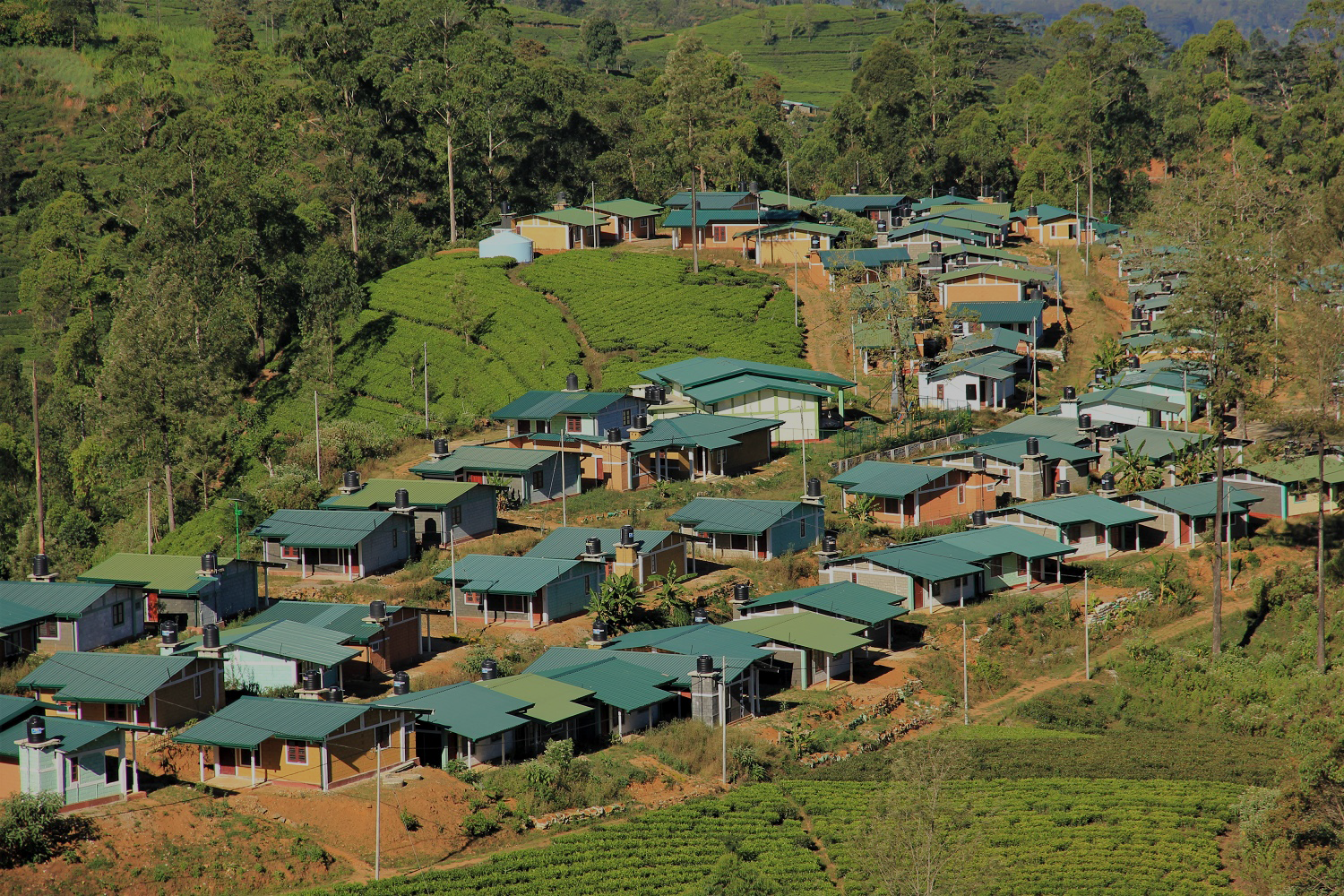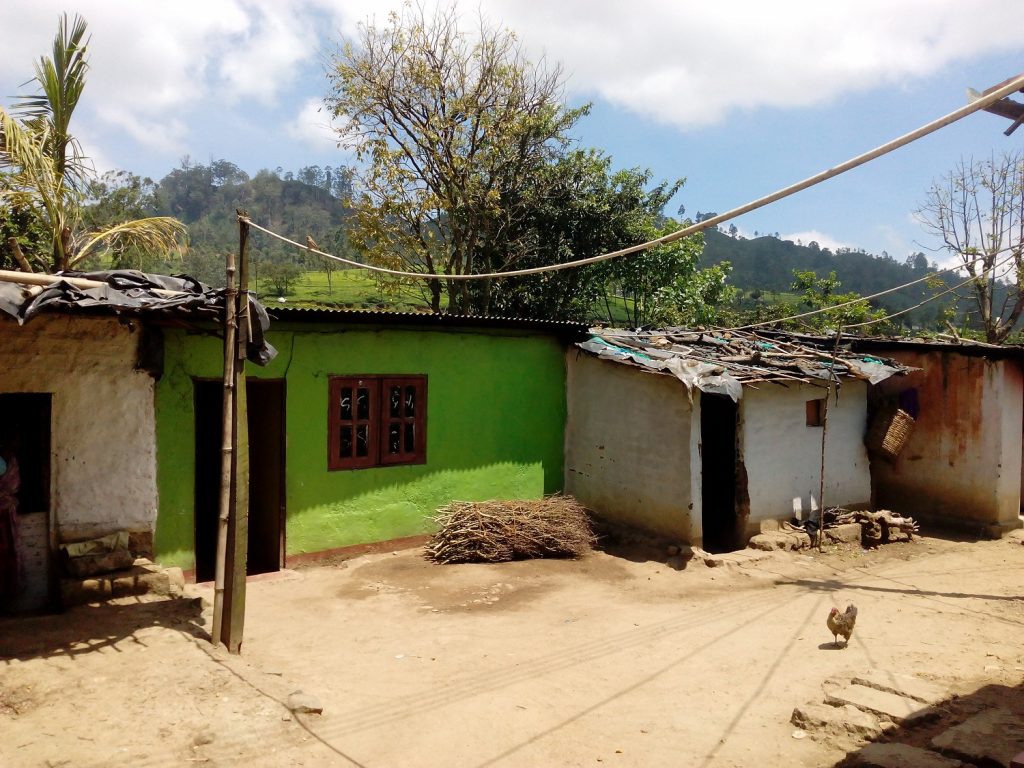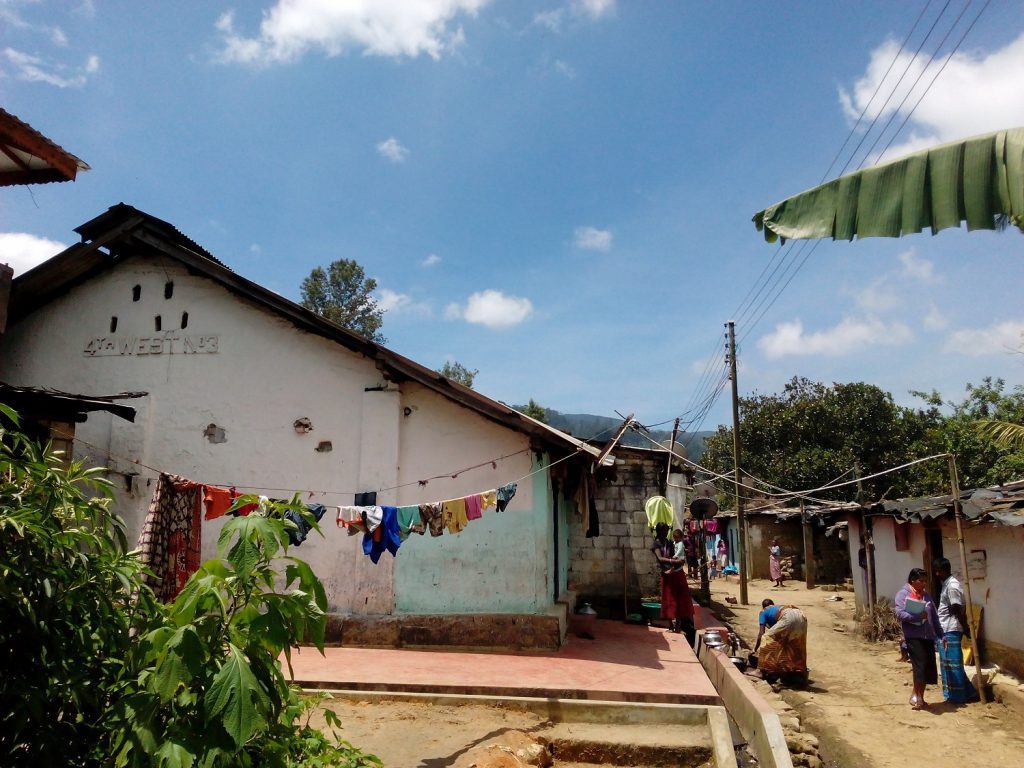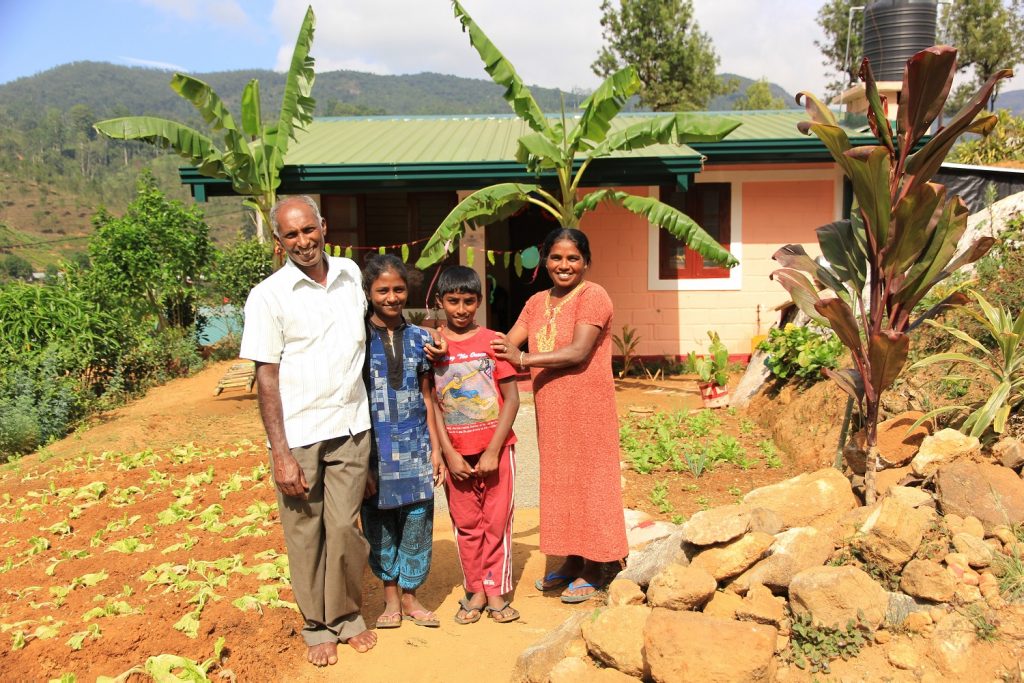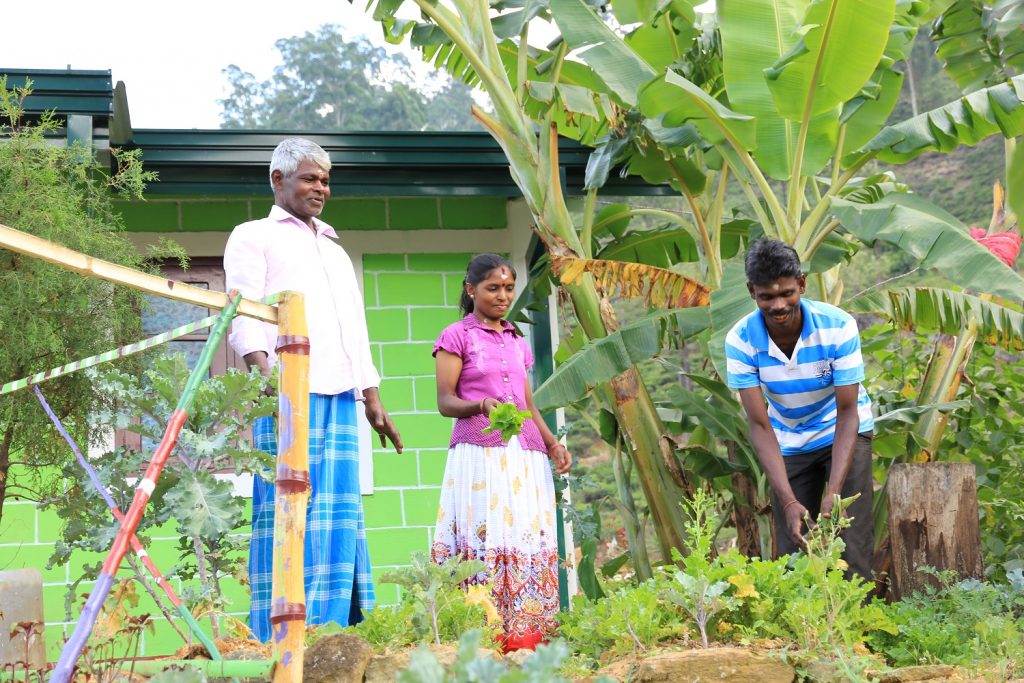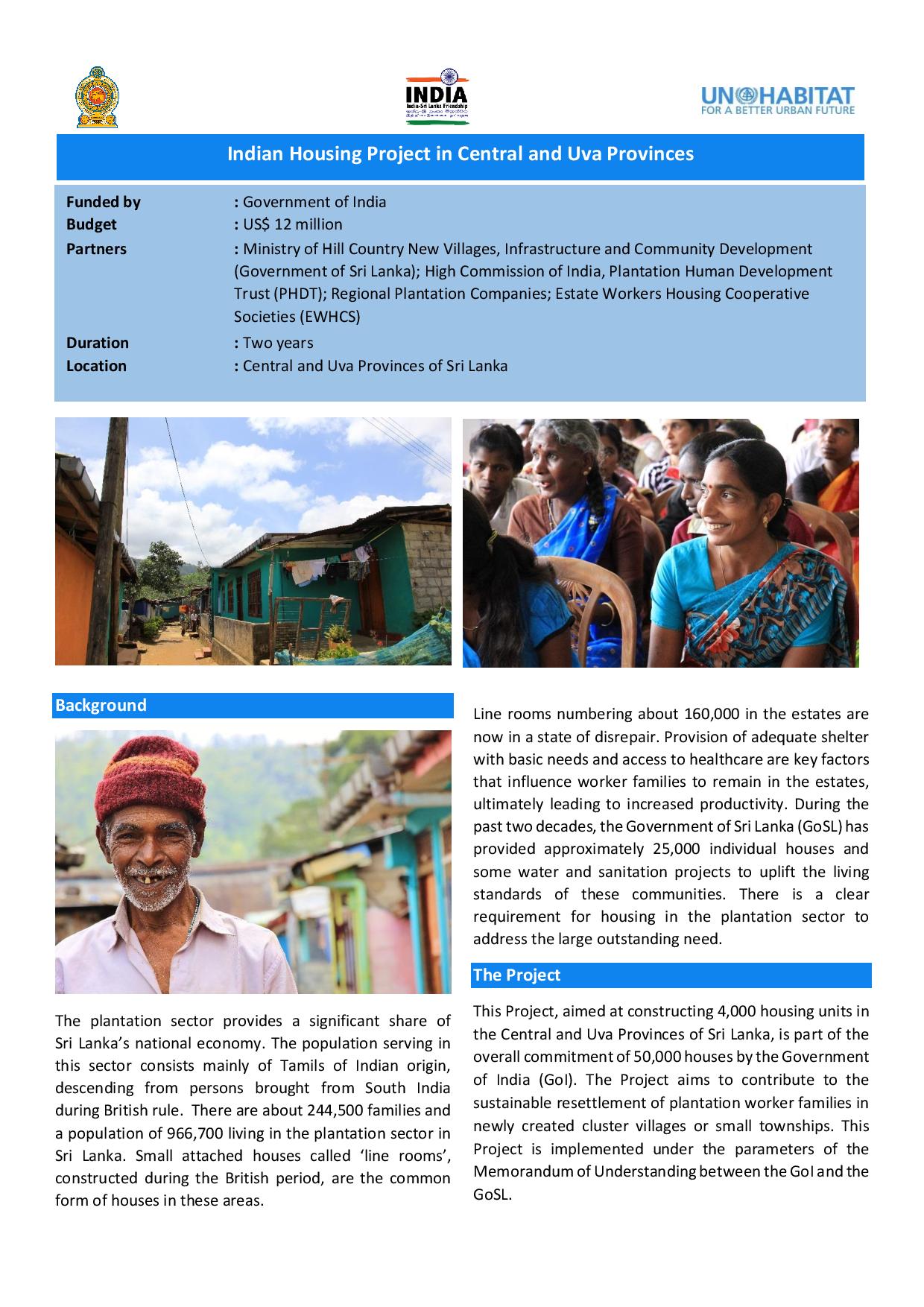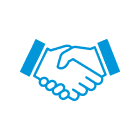Background
The plantation sector provides a significant share of Sri Lanka’s national economy. The population serving in this sector consists mainly of Tamils of Indian origin, descending from persons brought from South India during British rule. There are about 244,500 families and a population of 966,700 living in the plantation sector in Sri Lanka.
Small, attached houses called ‘line rooms’, constructed during the British period, are the common form of houses in these areas. Line rooms numbering about 160,000 in the estates are now in a state of disrepair. Provision of adequate shelter with basic needs and access to healthcare are key factors that influence worker families to remain in the estates, ultimately leading to increased productivity. During the past two decades, the Government of Sri Lanka (GoSL) has provided approximately 25,000 individual houses and some water and sanitation projects to uplift the living standards of these communities. There is a clear requirement for housing in the plantation sector to address the large outstanding need.
Objectives
This Project, aimed at constructing 4,000 housing units in the Central and Uva Provinces of Sri Lanka, is part of the overall commitment of 50,000 houses by the Government of India (GoI). The Project aimed to contribute to the sustainable resettlement of plantation worker families in newly created cluster villages or small townships.
Methodology
The project was implemented in close collaboration with Government of Sri Lanka, High Commission of India, Implementing Agencies, Plantation Human Development Trust (PHDT), respective Regional Plantation Companies (RPC) and the Estate Worker Housing Cooperative Societies (EWHCS) of the selected estates.
The Ministry of Hill Country New Villages, Infrastructure and Community Development, presently known as State Ministry of Estate Housing and Community Infrastructure (The Ministry), represented the Government of Sri Lanka in this project. The Ministry served as the lead agency for the project and is responsible for the overall coordination, guidance and support for all partners. It also provided funds for infrastructure facilities such as water supply, electricity, soil conservation and drainage and guide the PHDT in their implementation. The High Commission of India provided the funds for housing construction in installments to EWHCs and also provide overall supervision of the project in collaboration with the Ministry.
The PHDT and RPCs assisted the Ministry in selecting suitable land for creating new plantation villages. The PHDT coordinated with RPCs and EWHCSs in the facilitation of individual beneficiary families. In addition, the PHDT was responsible for obtaining approvals from the relevant authorities such as Local Authorities, Urban Development Authority and National Building Research Organisation. The PHDT also coordinated the implementation of other infrastructure development activities with funding from the Ministry.
The RPCs provided approval to release the lands in their estates for housing construction. RPCs also attended to preliminary work, conduct surveys, prepare the land and provide water and electricity during the construction period. EWHCSs held the responsibility of assisting RPCs in selecting beneficiary families, organising them to offer the expected support in construction, involving in construction activities under the supervision of the Implementing Agencies (IAs, including UN-Habitat). The initial list of beneficiaries recommended by the EWHCSs in consultation with the RPCs was vetted independently by the IAs as per the defined criteria. Following redressal of grievances, the list of beneficiaries was finalised. The finalised list of beneficiaries was shared with the Ministry by the IAs with a copy to HCI.
Cash grants of LKR. 950,000 was channeled through the EWHCS to each beneficiary in four installments. The house was a minimum of 550 square feet, consisting of two bedrooms, a living room, a kitchen and a toilet. The beneficiaries had the flexibility to expand the houses after the completion of the basic house constructed under the project. Beneficiaries were also able to provide in-kind contributions of labour and building materials towards the construction effort in order to save costs.
To construct the housing units, the IA supervised, coordinated, monitored and supported each stage of construction with detailed technical specifications. The community and others involved in the project are guided on the basics of construction. Support by IAs included basic technical awareness in construction and skill training.
Implementation of the Indian Housing Project in Plantation Areas, which commenced in July 2016 was completed as at 31st July 2021, with construction of the total caseload of 1,615 houses. The total number of persons benefitting from training during the project period is 17,662. A total of LKR 1,534 million was disbursed by IHC in the form of grants to the beneficiaries.
Donors and Key Project Stakeholders
Donor:
Government of India
Key Project Stakeholders:
State Ministry of Estate Housing and Community Infrastructure (Government of Sri Lanka), High Commission of India, UN-Habitat, Plantation Human Development Trust (PHDT), Regional Plantation Companies, Estate Worker Housing Cooperative Societies (EWHCS), National Building Research Organisation (NBRO), Central Environment Authority (CEA), Ceylon Electricity Board (CEB).
Relevant Links
UN-Habitat Sri Lanka | Indian Housing Project in Plantation Areas (unhabitat.lk)
